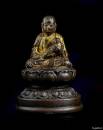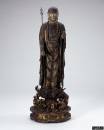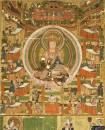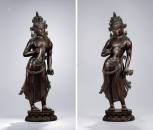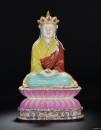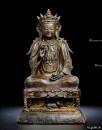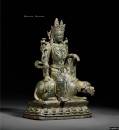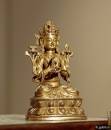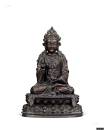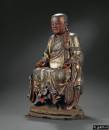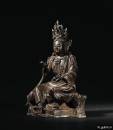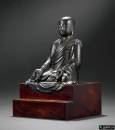侧边栏
这是本文档旧的修订版!
地藏菩萨(Ksitigarbha)
地藏菩萨(梵语:Ksitigarbha),因其“安忍不动,犹如大地,静虑深密,犹如秘藏”,所以得名。佛典载,地藏菩萨在过去世中,曾经几度救出自己在地狱受苦的母亲;并在久远劫以来就不断发愿要救度一切罪苦众生尤其是地狱众生。所以这位菩萨同时以“大孝”和“大愿”的德业被佛教广为弘传。也因此被普遍尊称为“大愿地藏王菩萨”,并且成为了汉传佛教的四大菩萨之一。唐朝来华求法的地藏比丘被认为是地藏菩萨的化身。这位出身新罗王族的僧人所在的安徽九华山也被视为地藏菩萨的应化道场,并因此成为了中国佛教四大名山之一,千百年来香火鼎盛。
外文描述
Samantabhadra is a bodhisattva known from the Mahayana Sutras. He is most often depicted in art as a member of the group known as the Eight Great Bodhisattvas which include the famous Manjushri, Avalokiteshvara and Vajrapani. Unlike those figures Samantabhadra never gained the popularity and was not elevated in the Tantric literature to the level of a meditational deity (ishtadevata). Samantabhadra the bodhisattva is unrelated to Samantabhadra the primordial Buddha of the Nyingma Tradition of Tibetan Buddhism.
Samantabhadra is rarely if ever depicted alone and his iconographic characteristics are not fixed and often difficult to identify. In descriptive ritual praises (stotra) Samantabhadra is described as red in colour. He holds a vase in the right hand and the symbol of the sun atop a flower blossom held in the left hand. In the tradition of the artist Konchog Pende of E (circa 16th century) Samantabhadra is blue in colour and holds a book with both hands. In the Chinese artistic tradition Samantabhadra is commonly depicted seated atop an elephant. There is also a mountain sacred to Samantabhadra call Omei Shan in Sichuan Province.
相关页面
造像特征
地藏菩萨最常见的形象是身着菩萨装, 头戴五如来冠,身披袈裟,右手执如意或莲花(如意棒是普贤比较明显的特征, 尤其是在没有象的情况下, 有时法器也会是日轮),骑于六牙白象之上(或者宝座上雕有大象),四只象足分别踩在四朵莲花上。六牙白象是普贤形象最重要的标志,用以体现其功德的“谨慎静重”和佛法的大慈力。
常见的地藏菩萨造像按形象可分为:
深度阅读: 地藏菩萨造像沿革
参考文献:
……





